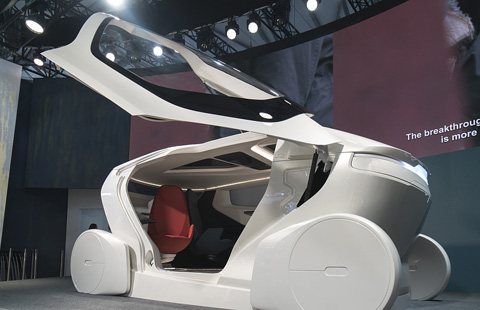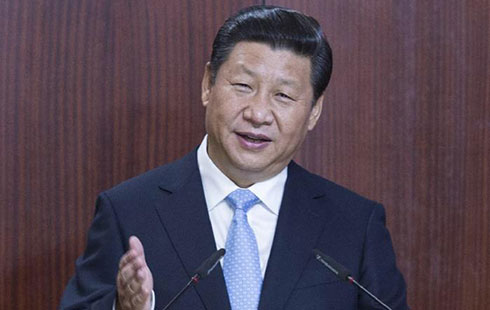China-Kazakhstan border trade drives Hummer driver's dream for fortune
 |
|
Liu Xinwei and his long Hummer. [Photo/Xinhua] |
Liu Xinwei's long Hummer is an eye-catcher on the China-Kazakhstan border.
"In two years, tall buildings will rise up here, and opportunities are everywhere," Liu told tourists on board while driving his long Hummer in a China-Kazakhstan free trade zone.
The Horgos International Border Cooperation Center on the China-Kazakhstan border in northwest China's Xinjiang Uygur Autonomous Region has seen an increasing number of tourists since 2012. It attracted a total of 5.43 million tourists in 2016.
Covering 5.28 square kilometers, the center opened in April 2012 as a destination for cross-border shopping. It has more than 40 duty-free shops selling luxury brands such as Omega and Versace.
The facility is the world's first cross-border free-trade zone and the biggest duty-free shopping center in west China. It allows entry of citizens from any country with valid passports or with exit and entry permits.
Since its establishment, more and more fortune-seekers have been enticed here. Liu left his home in central China's Henan Province and arrived here in July 2016. He bought a second-hand Hummer in Kazakhstan and began to work as a tour guide. Every day he drives to show tourists around the FTZ.
"The center is especially busy in May. You can earn hundreds of yuan even if you sell bottled water," Liu said.
It takes about 20 minutes to travel around the FTZ by car. The Chinese guide put on rhythmic music, and introduced places of interest in Kazakhstan to tourists on the American vehicle.
Liu showed them the former gateway, villages, and construction sites on the Kazakhstani side. Scaffoldings shoot up here and there in the FTZ, marking high-rise buildings in the future.
At the westernmost end of the Silk Road in China, Horgos was a transit point on the ancient trade route in the Tang Dynasty (619-907). In ancient times, merchants from Central Asia, the Middle East and Western Europe braved the Gobi Desert and nomadic bandits to arrive at Chang'an, the historical name of Xi'an, then the world's largest metropolis and capital city of Tang.
Today Horgos has become the youngest city on the Silk Road Economic Belt. Put forward by Chinese President Xi Jinping in 2013, the Belt and Road Initiative aims to build a trade and infrastructure network connecting Asia with Europe and Africa along and beyond the ancient Silk Road trade routes.
The Horgos FTZ has seen rising flow of people and goods. It has recorded a trade volume of 878 million US dollars since opening as of last July.
"It's off season, so I have time to tell my customers more about the place," said Liu, "When in high season, we can stop for only ten minutes in every place. We have to leave after a snapshot, because too many tourists will line up behind us."
"When in July, I can pick up 20 tourists in every trip. Each pay me 50 yuan (7.2 US dollars), and I can do 10 trips a day," Liu did the math. "It's easier to make a fortune here than in the inland."
He plans to build some yurts near the Kazakhstani gateway, providing local cuisine and folk performance. "When tourists come, they will want to stay, just as I did."













